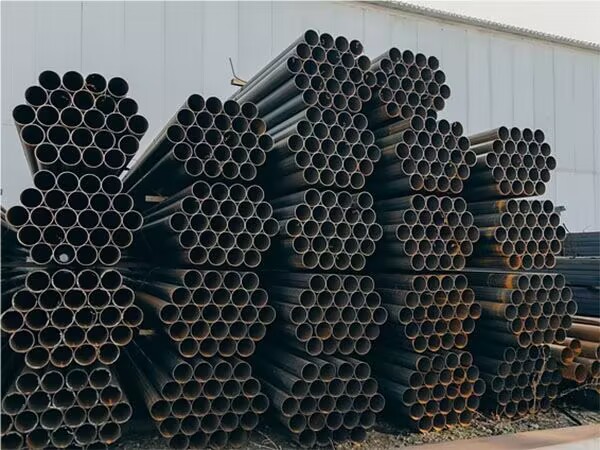What are the external factors that affect the tensile strength of seamless steel pipes?
Seamless pipe (SMLS) is a long steel pipe with a hollow section and no seams around it. Tensile strength refers to the maximum tensile stress that a material can withstand in a tensile test, usually expressed in MPa. For seamless steel pipes, the tensile strength reflects the ability of the steel pipe to resist fracture when subjected to tensile load, and its tensile strength is closely related to the material composition, heat treatment process and external environment. The following are the factors that affect the tensile strength of seamless steel pipes:

1. Temperature factor
(1) High temperature environment: High temperature will cause steel grains to grow, the yield point of the metal to decline, making the tensile strength of the material decline.
(2) Low temperature environment: at low temperatures, steel is prone to low temperature brittleness (especially carbon steel and low alloy steel), resulting in a significant decline in tensile strength. Seamless steel pipes in the frozen storage and transportation industry need to select special low-temperature materials.
2. Environmental factors
(1) Corrosive environment: When the seamless pipe is exposed to acidic, alkaline and salt environments, an electrochemical reaction will occur, resulting in the tube surface thinning or even cracking, thereby reducing the tensile strength.
(2) High humidity environment: high humidity environment may lead to water film on the surface of seamless pipe, thus accelerating oxidation or electrochemical corrosion, indirectly weakening its tensile strength.
3. Influence of mechanical load
(1) Fatigue load: When the seamless pipe is subjected to high pressure load for a long time, the steel will gradually form fatigue cracks, which will lead to a decline in tensile performance.
(2) Impact load: sudden high-strength impact may cause local strain or even fracture of seamless steel pipes, such as sudden external impact of pipelines.
4. Influence of surface state
(1) Surface defects: When there are cracks, scratches or welding spatter on the surface, these defects will become stress concentration points, and under the action of stress, it is easy to lead to a decrease in the strength of the material.
(2) Corrosion and oxidation: the oxide or rust layer on the surface of the steel pipe may weaken the bearing capacity of the pipe, especially under dynamic load.
5. Influence of heat treatment and welding process
(1) Heat treatment: heat treatment process (such as quenching, tempering, annealing, etc.) directly affects the structure of seamless steel pipe, improper heat treatment may lead to material grain coarsening or precipitation of the second phase, thereby reducing the tensile strength of seamless steel pipe.
(2) Welding impact: In the welding process of seamless steel pipe connection, the organization of the heat affected zone may change, and there is a difference between the strength of the weld area and the base material, affecting the overall tensile strength.
6. Solution and optimization measures
(1) Material selection: Select the appropriate material according to the use environment (such as high temperature steel, corrosion resistant steel or low temperature steel).
(2) Surface treatment: The use of galvanized, painted or sprayed anti-corrosion coating, etc., to enhance the surface corrosion resistance.
(3) Optimize heat treatment: according to the needs of use, optimize the heat treatment process to enhance the organizational properties of the material.
(4) Reduce stress concentration: Avoid surface scratches and cracks, optimize the welding process, and reduce the stress concentration area.
(5) Environmental protection: In a corrosive environment, protective casing or isolation measures are used to avoid direct contact with the medium.
(6) Regular inspection: Especially for pipelines used under high temperature, high pressure and corrosive conditions, non-destructive testing (such as ultrasonic, X-ray) should be carried out to monitor the state of the material.
Read more : Analysis of advantages and disadvantages of seamless pipe
